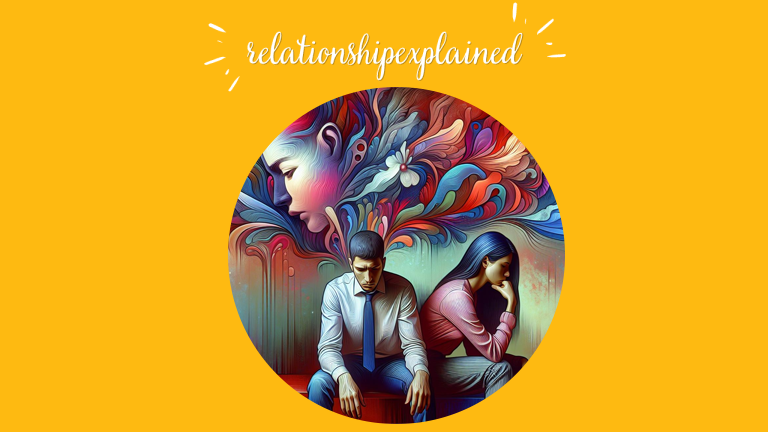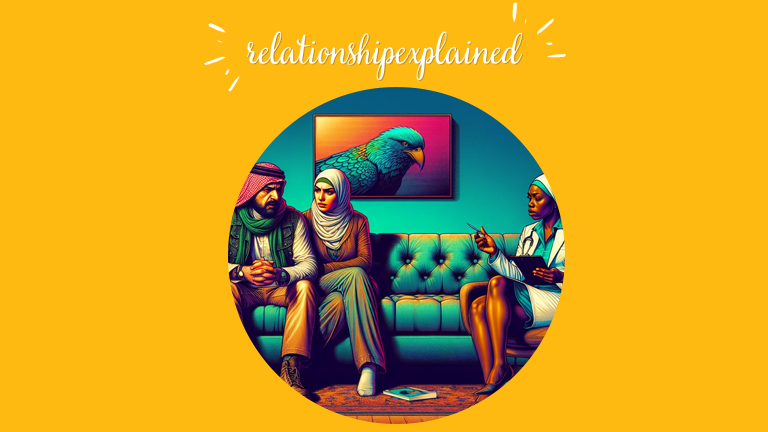How I Met My Husband?
Are you intrigued by the heartwarming tale of "How I Met My Husband"? This personal narrative, often confused with Alice Munro's classic short story, unravels a unique love story set against the quaint backdrop of rural Canada. Delving into the simplicity of life, unexpected encounters, and the serendipity of love, this story offers a glimpse […]
Are you intrigued by the heartwarming tale of "How I Met My Husband"? This personal narrative, often confused with Alice Munro's classic short story, unravels a unique love story set against the quaint backdrop of rural Canada. Delving into the simplicity of life, unexpected encounters, and the serendipity of love, this story offers a glimpse into the protagonist's journey to finding her life partner in the most unforeseen circumstances.
Well, we'll be going over:
- How does the setting of a small Canadian town contribute to the unfolding of this love story?
- In what ways do the fairground meetings symbolize the beginning of a lifelong bond?
- What role do supporting characters play in weaving the narrative of this enchanting love story?
Let's dive in.
Setting the Scene
"How I Met My Husband" takes place in a small town where everyone knows everyone else's business. Edie is a naive young woman who works as a maid for a wealthy family, and dreams of a better life. One day, a handsome pilot named Chris arrives in town and takes a liking to Edie. Despite the fact that he is engaged to another woman, Edie falls for his charms and begins a secret romance with him.
The Rural Canadian Backdrop
Growing up in a small town in rural Canada during the postwar period, you never imagined that you would meet your future husband at a fairground. The town was nestled in the heart of the Canadian countryside, surrounded by vast expanses of farmland and rolling hills. Life was simple and slow-paced, with most of the town's inhabitants knowing each other by name.
As a child, you spent most of your time playing outside, exploring the woods and fields that surrounded your family's farm. The town was small, and there wasn't much to do, so you had to make your own fun. But despite the lack of excitement, you loved the peace and quiet of rural life.
The Fairground as a Central Motif
Fast forward to your early twenties, and you found yourself at the annual fairground in your hometown. The fairground was a central motif in the town's social calendar, and everyone looked forward to it each year. It was a place where people from all walks of life came together to celebrate, catch up, and have fun.
As you walked around the fairground, you noticed a man who caught your eye. He was tall, with dark hair and a rugged look about him. You struck up a conversation, and before you knew it, you were laughing and joking like old friends.
The fairground became a special place for the two of you, and you spent many evenings there together, talking, laughing, and falling in love. It was a magical time, and you knew that you had found someone special.
In conclusion, the rural Canadian backdrop and the fairground played a significant role in bringing you and your husband together. The simplicity and beauty of small-town life, combined with the excitement and energy of the fairground, created the perfect setting for your love story to unfold.
Character Profiles
When it comes to telling the story of how you met your husband, it's important to give some attention to the supporting characters who played a role in bringing the two of you together. Here are some brief character profiles of the people who helped make your love story possible.
Alice Kelling: The Protagonist
As the main character in your story, Alice Kelling is the person who sets everything in motion. Without her, you may never have met your husband in the first place. Alice's decision to invite you to her family's summer home is what leads you to the lake where you first meet Chris Watters. While Alice may not play a big role in the rest of the story, her initial actions are what make everything else possible.
Edie: The Hired Girl
Edie is the hired girl who works for the Kelling family and helps take care of the house during the summer. While she doesn't have a big role in the story, she does provide some important context for the time period and setting. Edie's presence also helps to establish the social dynamics of the Kelling family and their relationship to the other characters in the story.
Chris Watters: The Charming Pilot
Chris Watters is the charming pilot who captures your heart from the moment you meet him. With his good looks, easy smile, and confident demeanor, it's easy to see why you fell for him. Chris's profession as a pilot also adds an element of adventure and excitement to the story, as he takes you on a flight that cements your feelings for him.
Dr. and Mrs. Peebles: The Employers
Dr. and Mrs. Peebles are the employers who provide you with a job as a veterinarian during the summer. While they don't play a big role in the story, they do provide some important context for your character and help to establish your professional background. The Peebles also serve as a contrast to the Kelling family, highlighting the differences between their social classes and lifestyles.
Other Supporting Characters
While these are some of the main supporting characters in your story, there are likely others who played a role in bringing you and your husband together. These could include family members, friends, or other people you met along the way. While their roles may have been small, they still contributed to the overall narrative of your love story.
Overall, the supporting characters in your story help to provide context, establish the setting and social dynamics, and add depth and complexity to the narrative. While they may not be the main focus of the story, they still play an important role in bringing you and your husband together.
Themes and Motifs
When you recount the story of how you met your husband, certain themes and motifs emerge. These themes and motifs are recurring ideas and symbols that help to convey the deeper meaning of your story. In this section, we will explore some of the most prominent themes and motifs in your story, including Love and Courtship, Coming of Age and Self-Discovery, Social Class and Gender Roles.
Love and Courtship
Love and courtship are central themes in your story. The courtship phase of your relationship is characterized by romantic gestures, such as dates, gifts, and love letters. These gestures are a way of expressing your love and affection for one another. As your relationship progresses, you begin to build a deeper emotional connection, which leads to a more profound love for each other.
Coming of Age and Self-Discovery
Your story also touches on themes of coming of age and self-discovery. As you navigate the ups and downs of your relationship, you learn more about yourself and what you want out of life. You discover your strengths and weaknesses, your likes and dislikes, and your hopes and dreams. This process of self-discovery is an essential part of growing up and becoming an adult.
Social Class and Gender Roles
Social class and gender roles are also relevant themes in your story. You come from different social backgrounds, which can create conflict and tension in your relationship. Additionally, gender roles play a significant role in your story, as you navigate societal expectations and norms. Despite these challenges, you find a way to overcome them and build a strong, loving relationship.
In conclusion, the themes and motifs that emerge from your story are a testament to the complexity and richness of your relationship. By exploring these themes and motifs, we gain a deeper understanding of the challenges and triumphs that you faced on your journey to finding true love.
Narrative Techniques
When it comes to telling a story, there are many narrative techniques that can be used to make it more engaging and memorable. In this section, we will discuss two of these techniques: Point of View and Narration, and Symbolism and Irony.
Point of View and Narration
One of the most important narrative techniques is point of view and narration. The narrator is the person who tells the story, and the point of view refers to the perspective from which the story is told. In the case of "How I Met My Husband," the narrator is likely the protagonist, or the person telling the story.
The narrator's perception of the events that occurred can be influenced by their personal biases and self-deception, which can add to the complexity of the story. For example, the narrator may have a skewed perception of events that occurred due to their own self-deception or lack of understanding.
Symbolism and Irony
Another important narrative technique is the use of symbolism and irony. Symbolism is the use of objects or actions to represent something else, while irony is the use of language to convey a meaning that is the opposite of its literal meaning.
In "How I Met My Husband," the mailbox can be seen as a symbol of hope and anticipation. The protagonist waits for a letter from her love interest, and the mailbox represents the possibility of that letter arriving. The use of irony can also be seen in the story, such as when the protagonist falls in love with the man who was supposed to be writing to her employer. This unexpected turn of events adds to the complexity and interest of the story.
In conclusion, the use of narrative techniques such as point of view and narration, symbolism, and irony can greatly enhance the storytelling experience. By using these techniques effectively, a writer can create a story that is engaging, memorable, and thought-provoking.
Cultural and Historical Context
Post-World War II Society
The world was a different place after World War II. The war had brought about significant changes in society. The economy was booming, and modern conveniences like electricity and automatic washing machines were becoming more common. This period also saw a shift in the way people lived their lives. Community was still essential, but people were starting to focus more on their individual lifestyles.
Transitioning Lifestyles and Modernity
Your family was a farming family, and you grew up in a tight-knit community. However, as you grew older, you started to see the world change around you. The younger generation was moving away from the traditional farming lifestyle, and more people were moving to the cities to pursue new opportunities.
As modernity was taking over, you were also transitioning to a new lifestyle. You were pursuing your education and building a career. You were excited about the changes that were happening around you, but you also missed the sense of community that you grew up with.
It was during this time that you met your future husband. He was also going through a similar transition, and you both bonded over your shared experiences. You both had a strong connection to your past, but you were also excited about the future.
In conclusion, the post-World War II society brought about significant changes in the way people lived their lives. As modern conveniences became more common, people started to focus more on their individual lifestyles. However, community was still essential, and people continued to cherish their connections to their past.
Critical Reception and Impact
Your short story "How I Met My Husband" by Alice Munro has received widespread critical acclaim since its publication. The story has been praised for its insightful portrayal of female characters and their struggles in a patriarchal society. The story is set in rural Canada, and it captures the essence of small-town life and the social dynamics that come with it.
The story's impact on Canadian literature has been significant, with many scholars citing it as a prime example of Munro's work. The story has been anthologized in various collections and has been studied by students and scholars alike.
The story's popularity can be attributed to its relatable characters and the universal themes it explores. Munro's writing style is clear and concise, and she uses vivid imagery to bring her characters to life. The story's structure is also noteworthy, with Munro using a non-linear narrative to tell the story.
Overall, "How I Met My Husband" is a timeless piece of literature that continues to resonate with readers today. Its impact on Canadian literature and society is undeniable, and its critical reception has been overwhelmingly positive.
Frequently Asked Questions
What literary devices are prominent in 'How I Met My Husband' by Alice Munro?
In 'How I Met My Husband', Alice Munro makes use of several literary devices to enhance the story's meaning and impact. One of the most prominent literary devices in the story is irony, which is used to create a sense of tension and humor. Munro also employs symbolism, such as the image of the airplane, to develop the story's themes.
What is the main theme explored in 'How I Met My Husband'?
The main theme explored in 'How I Met My Husband' is the idea of romantic love and its complexities. The story examines the different ways in which people experience love, and how these experiences shape their understanding of themselves and others.
Which character does Edie marry by the end of the story 'How I Met My Husband'?
Edie does not end up marrying any character by the end of the story 'How I Met My Husband'. Instead, she gains a deeper understanding of herself and her desires through her experiences with the different men in her life.
From whose point of view is the story 'How I Met My Husband' narrated?
The story 'How I Met My Husband' is narrated from the first-person point of view of the protagonist, Edie. This allows the reader to gain insight into her thoughts and feelings, and to experience the story's events from her perspective.
What is the central conflict in Alice Munro's 'How I Met My Husband'?
The central conflict in 'How I Met My Husband' is the tension between Edie's desire for romance and her sense of duty and responsibility. This conflict is embodied in her relationships with different men, and is resolved through her growing self-awareness.
How does Alice Munro establish the tone in 'How I Met My Husband'?
Alice Munro establishes the tone of 'How I Met My Husband' through her use of language and imagery. The story has a nostalgic, wistful tone that is created through the use of evocative descriptions and sensory detail. This tone contributes to the story's themes of memory and longing.












